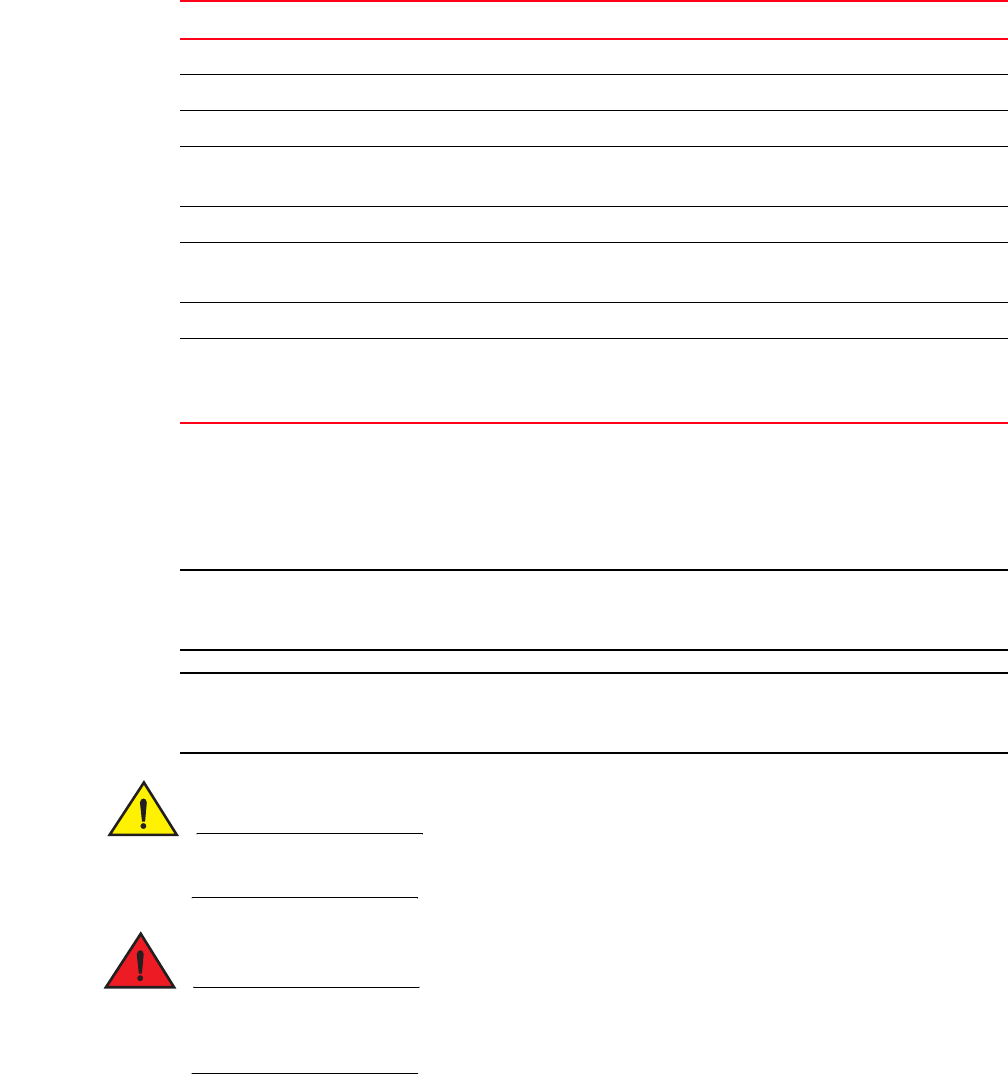(Supporting ADX v03.1.00) Owner's manual
Table Of Contents
- Contents
- Preface
- Introduction to the Brocade Virtual ADX Web Interface
- Navigating the Web Interface
- Navigating the Dashboard
- Configuration Overview
- System Settings
- Network Settings
- Traffic Settings
- GSLB Settings
- Security Settings
- Monitoring Overview
- Viewing System Information
- Viewing Network Status
- Viewing Traffic Statistics
- Viewing Security Statistics
- Maintenance Overview
- Managing Software Images
- Restarting the System
- License Management
- Packet Capture
- Accessing the CLI
- Retrieving System Information for Technical Support
- Troubleshooting
- Config Template XML Schema
- Managing Config Templates through the CLI

x Brocade Virtual ADX Graphical User Interface Guide
53-1003242-01
Command syntax conventions
Notes, cautions, and warnings
The following notices and statements may be used in this document. They are listed below in order
of increasing severity of potential hazards.
NOTE
A note provides a tip, guidance or advice, emphasizes important information, or provides a reference
to related information.
ATTENTION
An Attention statement indicates a stronger note, for example, to alert you when traffic might be
interrupted or the device might reboot.
CAUTION
A Caution statement alerts you to situations that can be potentially hazardous to you or cause
damage to hardware, firmware, software, or data.
DANGER
A Danger statement indicates conditions or situations that can be potentially lethal or extremely
hazardous to you. Safety labels are also attached directly to products to warn of these conditions
or situations.
Convention Description
bold text Identifies command names, keywords, and command options.
italic text Identifies variables.
[ ]
Syntax components displayed within square brackets are optional.
{ x | y |z }
A choice of required parameters is enclosed in curly braces separated
byvertical bars. You must select one.
x | y
A vertical bar separates mutually exclusive elements.
< >
Nonprinting characters, for example, passwords, are enclosed in angle
brackets.
...
Repeat the previous element. For example, member [member...].
\
Indicates a “soft” line break in command examples. If a backslash
separates two lines of a command input, enter the entire command at the
prompt without the backslash.










